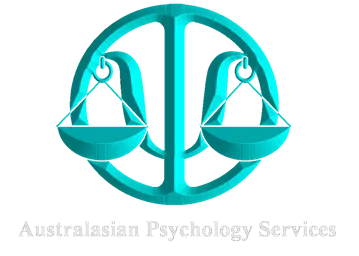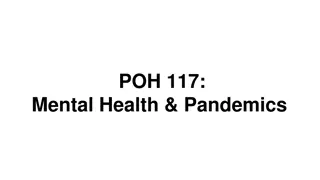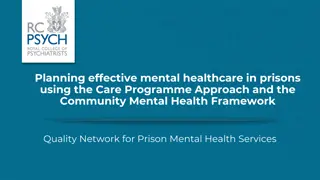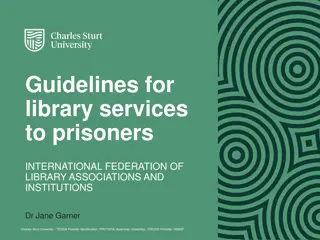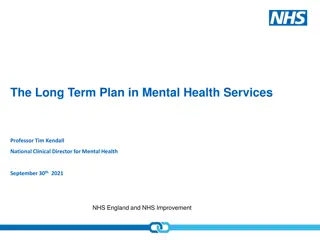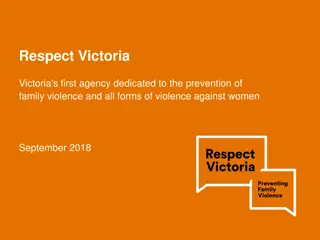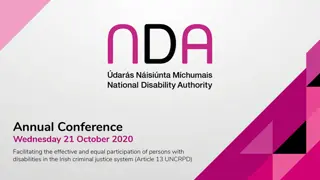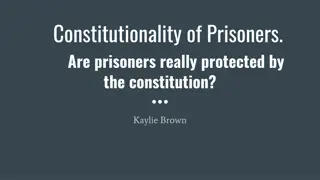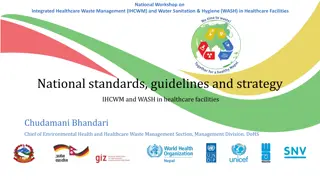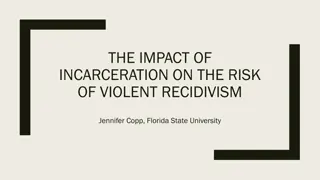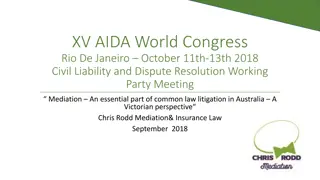Enhancing Custodial Mental Healthcare Services for Adult Male Prisoners in Victoria
Justice Health aims to extend mental healthcare services in Victoria's adult male prison system due to increased demand, changes in sentencing, and population growth. The existing services include a mix of public and private providers, a centralized delivery model, and specialized units for different mental health needs.
Download Presentation

Please find below an Image/Link to download the presentation.
The content on the website is provided AS IS for your information and personal use only. It may not be sold, licensed, or shared on other websites without obtaining consent from the author. Download presentation by click this link. If you encounter any issues during the download, it is possible that the publisher has removed the file from their server.
E N D
Presentation Transcript
CUSTODIAL MENTAL HEALTHCARE IN VICTORIA Extending Services For Adult Male Prisoners January 2015 - Canberra (ACT) Dr. Dion Gee Australasian Psychology Services Australasian Psychology Services Dr.Gee@AustralasianPsychologyServices.co : www.AustralasianPsychologyServices.co
OVERVIEW Background Existing Custodial Mental Healthcare Service Demand Areas of Priority Identified Gaps in Service Delivery Service Model of the MFMHU
BACKGROUND CONTEXT Justice Health s request to extend custodial mental healthcare services in the Victorian adult male prison system Pressure on existing custodial services Changes to the sentencing landscape Re-branding of CV s Clinical Services to OBP Increase in Victoria s prisoner population Planned further expansion of prison capacity
EXISTING MENTAL HEALTHCARE Complex rubric of public & private services Prisons & Secure Mental Health Hospital Centralised model of delivery Medicalisation of mental health issues Acute mental healthcare (MAP) Regional mental health environments Slow-Stream Rehabilitation (St. Pauls Unit) ID & ABI Intervention (Marlborough Unit)
ACUTE MENTAL HEALTHCARE (MAP) Acute Assessment Unit: 16 inpatient beds; 6 observation cells Services for MMI Primary gateway to TEH Outpatient Mental Healthcare: Step-down & Sub-acute MMI service Triage/management of AAU waitlist Screening all new prisoner receptions Observation & SASH reviews
SECONDARY MENTAL HEALTHCARE Drug & Alcohol Services (Caraniche) Aboriginal Liaison (CV) Coping/Adjustment to prison (ORP) Offence reduction programs (ORP; SOP; VIP) Court report services (Forensicare) Suicide & Self-harm training (Forensicare)
MENTAL HEALTH PSYCHOLOGY Psychological/psychosocial interventions are currently adjunct clinical services Dedicated Mental Healthcare Psychology St Pauls Psychosocial Rehabilitation Marlborough Unit ID/ABI Specific Psychological Mental Healthcare Acute services at MAP (AAU and Outpatients) Assessment, intervention & management Mental health provision for the system
SERVICE DEMAND Increased prisoners numbers (n=5817) Reception numbers - 2013 (n=6624; 552/month) Incoming MAP movements - 2013 (n=8302) MAP bed turnover rates 15.8 days to 12.3 days 44% with psychiatric conditions (P1,P2,P3) P1 60 (21 inpatient; 39 outpatient) P2 158 (17 MAP; 54 MRC; 87 PPP) MAP - 60% with psychiatric rating (n=167) Heightened acuity & Hold-times
MENTAL ILLNESS Lifetime prevalence study (Schilders & Ogloff) 2006/7 - 23.5% pre-existing diagnosis 4.2% Sch; 1.6% OSS; 17.6% OD Intensive/immediate inpatient services 63% Sch; 12.4% OSS; 4.7% OD Outpatient services Most Sch & OSS receive psychiatric services Minimal services for OD (HPD, IMF, Co-morbidity)
UNIDENTIFIED DEMAND Custodial mental healthcare lacks clinical breadth (Gee & Ogloff, 2014) Mirrors community inpatient services Evident through: Low identification rates of IMF and HPD Adherence to a medical model of illness Sluggish uptake of Courts position in Verdins Mismatch in Community equivalence Under estimation of mental health issues
SUICIDE 13 prisoner suicides in 10 years (Ogloff, 2014) 23% no identified mental health concerns Majority with Mood disorder or HPD with PD Recent Coronial inquest (Coroner White, 2014) Commented on 6 recent custodial suicides 2 (P1); 3 (P2); 1 no psychiatric rating 4 out of 5 provisional diagnosis (depression) Sourcing data on managing SASH difficult Often prisoners are transferred back to MAP
OBSERVATION/MUIRHEAD CELL Source: Victorian Ombudsman (2011)
SECLUSION SASH Risk = Seclusion in Observation Cell Increases mental instability, slows recovery Accurate system-wide data is limited MAP data (first 6 months 2014) 167 prisoners 1 day to several weeks At clearance 96% had a Psychiatric (P) rating 6 individuals no identified mental health issues 53% (n=87) had a P1 psychiatric rating 80 <P1; allowing immediate transfer from MAP
SOLITARY CONFINEMENT Violence Risk = Solitary Confinement 168 management beds (133 public; 35 private) 133 public in some level of solitary confinement 99 Long-Term Management beds (21.03.2014) 80% (n=79) public 75% of LTM had no psychiatric rating Limited proactive mental health monitoring 25% have pre-existing Psychiatric ratings Minimal intervention medication & monitoring
IMPETUSFOR CHANGE Several recent Coronial enquires/findings into deaths in custody Judicial questioning of service provision Victorian Ombudsman s reviews(2011; 2012; 2014) Revise prisoner access to psychiatric services Increase prisoner mental health accommodation Enhance services for the range of mental health problems Training Correction s Victoria staff on mental health identification Review management of & therapeutic approaches for SASH Address provision of rehabilitation & transitional programs
IDENTIFYING AREASOF PRIORITY Broaden custodial mental healthcare by focusing on unmet service needs Identification through contemporary literature, data analysis, discussion with stakeholders and anecdotal evidence See Gee, (2014); Gee & Ogloff (2014); Rushworth (2011); Schilders & Ogloff (unpublished); Victorian Ombudsman (2011; 2012; 2014) Service needs can be operationalised around four overlapping target areas:
KEY TARGET - 1 Identified service gaps in custodial mental healthcare: Identification of Impaired Mental Functioning Services for High Prevalence Disorders Transition services for Suicide and Self-Harm Enhanced mental health interventions Mental health in solitary confinement Correctional education on mental health
KEY TARGET - 2 Blockage within the current service model: Centralised service provision Bed-blockage, turn-over & bounce-back Mental health step-down Resourcing drain and secondary staff impacts Diagnostic services outside of MAP Transitional services & care-pathways
KEY TARGET - 3 Provision of comprehensive mental health assessment, intervention and clinical management to prisoners: Secondary intervention for MMI/IMF/HPD Mental health in solitary confinement Targeted SASH interventions Enhanced follow-up & transition planning Education on mental health management
KEY TARGET - 4 Areas of co-morbidity: Major Mental Illness (MMI) Impaired Mental Functioning (IMF) Intellectual Disability (ID) Acquired Brain Injury (ABI)/Dementia Challenging & externalizing behaviours Services for Culturally & Linguistically Diverse (CALD) and Aboriginal & Torres Strait Islander prisoners
LIMITING FACTORS Avoid replication Inability to address mental health acuity Servicing mental health needs of sentenced prisoner in regional prisons Fractured nature of custodial mental healthcare Inconsistency between public & private custodial mental healthcare service providers Obstacles to culturally sensitive intervention
IDENTIFIED SERVICE GAPS Four areas of clinical need identified within custodial mental healthcare: IMPAIRED MENTAL FUNCTIONING SUICIDE & SELF-HARM INTERVENTIONFOR MAJOR MENTAL ILLNESS MENTAL HEALTHIN SOLITARY CONFINEMENT Varying impact on turnover, bounce-back, bed-blockage, clearance rates and circuit- breaker placements
IMPAIRED MENTAL FUNCTIONING Targeted mental health interventions HPD; IMF; Co-occurring ID/ABI/Dementia Address Community Equivalence & Verdins Alleviate suffering, promote resilience & hope Psychological/Psychosocial modalities Debilitating mental health issues short of MMI Group & one-to-one interventions
SUICIDE & SELF-HARM Acceptance that acute/imminent risk is currently managed via Observation Cells Paucity of supportive transitional environs Lack of targeted interventions Limited formulation of causal mechanisms Over-reliance on procedural security Minimal reliance on relational security
INTERVENTIONFOR MMI Psychological/Psychosocial interventions Aid symptom resolution & promote recovery Limited availability of services Minimal slow-stream rehab (average 38-day stay) Limited non-pharmacological interventions Mental instability reduces access to ORP Minimal tailoring of criminogenic programs
SOLITARY CONFINEMENT Victorian Government & Judicial Officers question appropriateness (Butcher, 2014; Cook, 2013) Accepted consensus on deleterious effects (Grassian, 2006; Human Rights Defense Center, 2012; Shalev, 2008) Impacts most pronounced with MMI & IMF (see Grassian 2012; Metzner & Fellner, 2010) Minimal mental health monitoring Limited intervention to forestall deterioration
SERVICE OVERVIEW (MFMHU) Decentralised and mobile multi-disciplinary team Clinical Psychology, Occupational Therapy, Social Work, Psychiatric Nursing & sessional Psychiatry Delivering assessment, intervention and clinical management services (IMF, MMI, HPD, co-morbid ID/ABI) Utilises a transitional pathway approach to coordinate custodial service delivery Allows training/education, support and complex case consultation to stakeholders
MFMHU SERVICE MODEL
SYSTEM BENEFITS Decentralised custodial mental healthcare Increased clearance & through-put rates Reduced bounce-back & bed blockage Enhanced identification of mental health issues State-wide diagnostic evaluations Training, education & case consultation Management services for chronic SASH Step-down services for mental illness Coordinated transition planning services Addresses Verdins & Community Equivalence
SERVICE BENEFITS Enhanced identification, assessment & specific intervention for HPD & IMF Non-pharmacological intervention for MMI Intervention for SASH & solitary confinement Continuity in mental healthcare pathways Supports participation in ORP Time-limited transitional intervention Mental health stock takes for those in LMT Interventions for challenging behaviour Training/education on managing complex cases
References Butcher, S (2014). Judge attacks solitary confinement for young people in prison. The Age, 17 February 2014. Cook, H. (2013). Napthine Government calls for end to restraint and seclusion of mentally ill patients. The Age, 20.12.2013. Coroner White (2014). Inquest Finding - 111410 Adam Sasha Omerovic (January 2014). Gee, D. G. (2014). Psychopathology in Solitary Confinement: The Burden and Effect of Imprisonment on Impaired Mental Functioning (work in progress). Gee, D. G. & Ogloff, J. R. P. (2014). Sentencing Offenders with Impaired Mental Functioning: R v Verdins, Buckley and Vo [2007] at the Clinical Coalface. Psychiatry, Psychology and Law, 21 (1) 46-66. Grassian, S. (2006). Psychiatric effects of solitary confinement. Washing University Journal of Law and Policy, 22 325-382. Human Rights Defense Center (2012). Reassessing solitary confinement: The Human Rights, fiscal and public safety consequences. Presented before United States Senate Committee on the Judiciary, on June 19, 2012. Metzner,J. & Fellner, J. (2010). Solitary confinement and mental illness in U.S. prisons: A challenge for medical ethics. The Journal of the American Academy of Psychiatry and Law, 38 104-108; Ogloff, J. R. P. (2014). Personal communication. Rushworth, N (2011). Policy Paper: Out of Sight, Out of Mind: People with an Acquired Brain Injury and the Criminal Justice System. For the Australian Government Department of Families, Housing, Community Services & Indigenous Affairs. Schilders, N. & Ogloff, J. R. P. (unpublished). Shalev, S. (2008). A Sourcebook on Solitary Confinement. London: Mannheim Centre for Criminology, School of Economics R v Verdins, Buckley and Vo [2007] VSCA 102; (2007) 169 A Crim R 581. Victorian Ombudsman (2014) . Media Statement: Investigation into the provision of rehabilitation programs and transitional services for offenders (14 July, 2014). Victorian Ombudsman (2014) . Investigation into deaths and harm in custody (March 2014). Victorian Ombudsman (2012) The death of Mr Carl Williams at HM Barwon Prison Investigation into Corrections Victoria (April 2012). Victorian Ombudsman (2011). Investigation into prisoner access to health care (August 2011).
CONTACT DETAILS Contact Details: Dr.Gee@AustralasianPsychologyServices.co Presentation available from: www.AustralasianPsychologyServices.co/newsevents
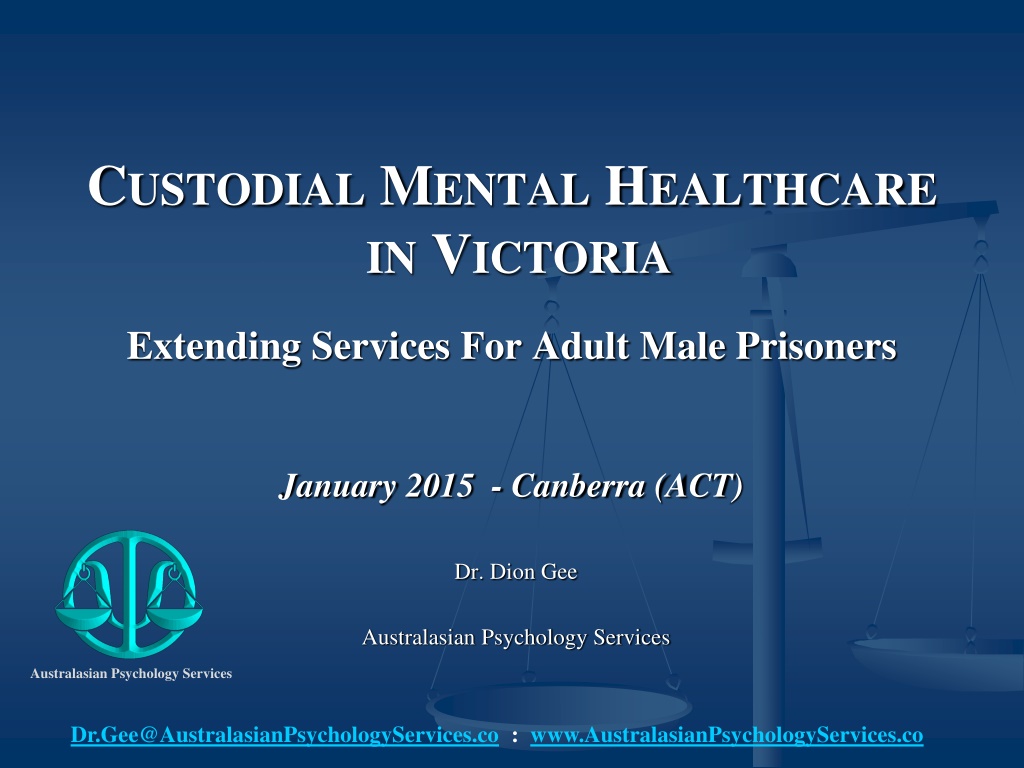
 undefined
undefined
